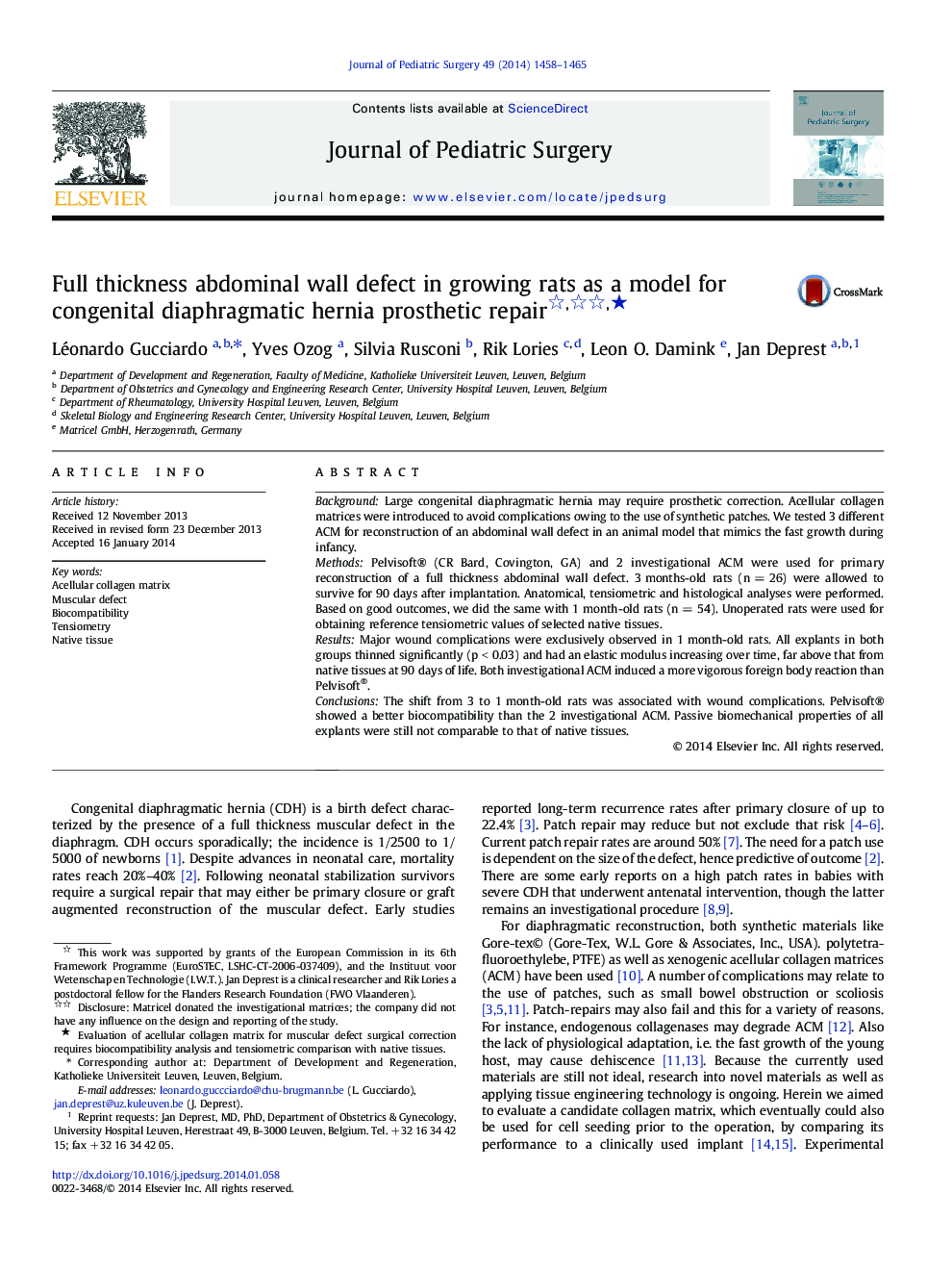| Article ID | Journal | Published Year | Pages | File Type |
|---|---|---|---|---|
| 4155513 | Journal of Pediatric Surgery | 2014 | 8 Pages |
BackgroundLarge congenital diaphragmatic hernia may require prosthetic correction. Acellular collagen matrices were introduced to avoid complications owing to the use of synthetic patches. We tested 3 different ACM for reconstruction of an abdominal wall defect in an animal model that mimics the fast growth during infancy.MethodsPelvisoft® (CR Bard, Covington, GA) and 2 investigational ACM were used for primary reconstruction of a full thickness abdominal wall defect. 3 months-old rats (n = 26) were allowed to survive for 90 days after implantation. Anatomical, tensiometric and histological analyses were performed. Based on good outcomes, we did the same with 1 month-old rats (n = 54). Unoperated rats were used for obtaining reference tensiometric values of selected native tissues.ResultsMajor wound complications were exclusively observed in 1 month-old rats. All explants in both groups thinned significantly (p < 0.03) and had an elastic modulus increasing over time, far above that from native tissues at 90 days of life. Both investigational ACM induced a more vigorous foreign body reaction than Pelvisoft®.ConclusionsThe shift from 3 to 1 month-old rats was associated with wound complications. Pelvisoft® showed a better biocompatibility than the 2 investigational ACM. Passive biomechanical properties of all explants were still not comparable to that of native tissues.
